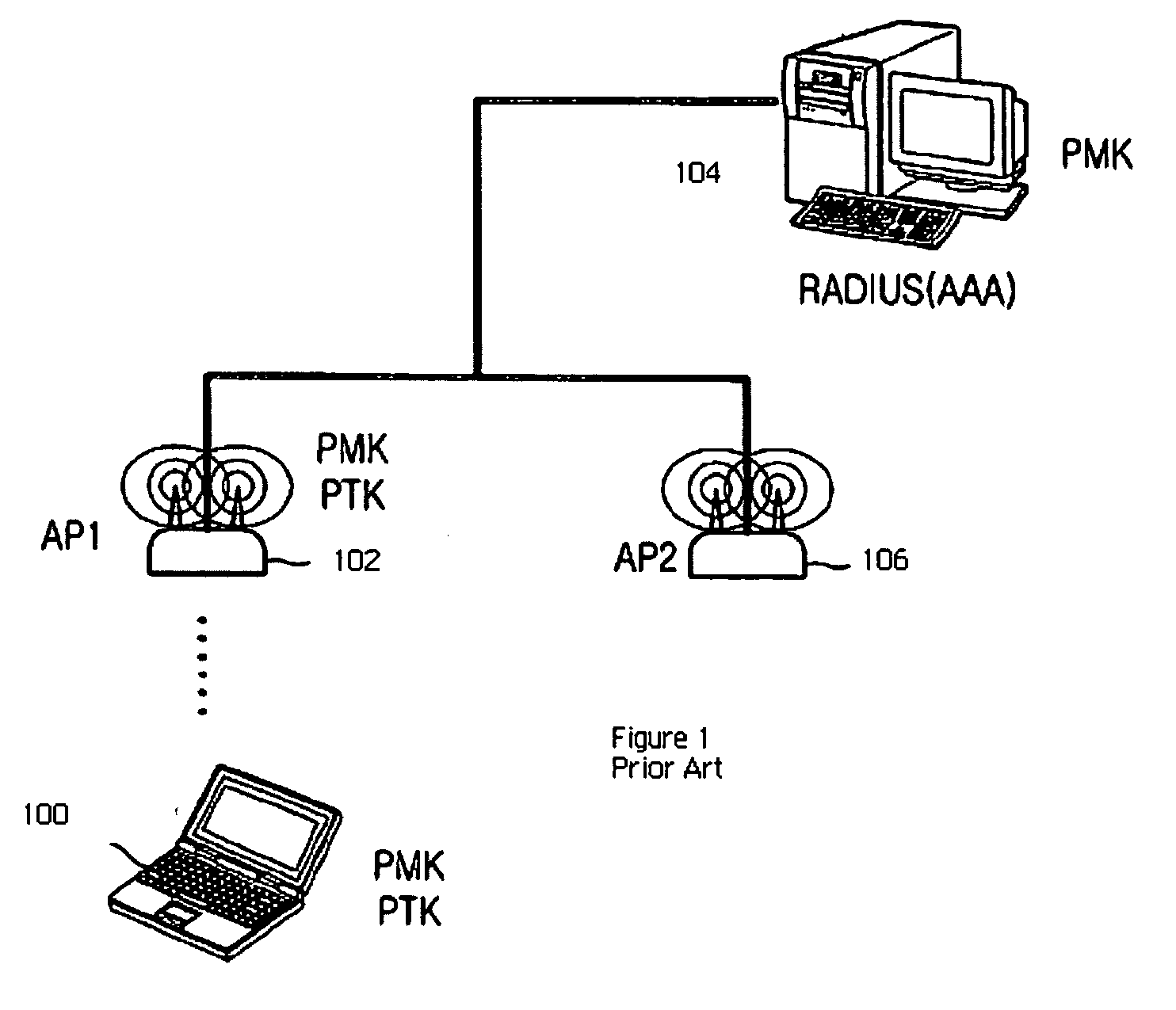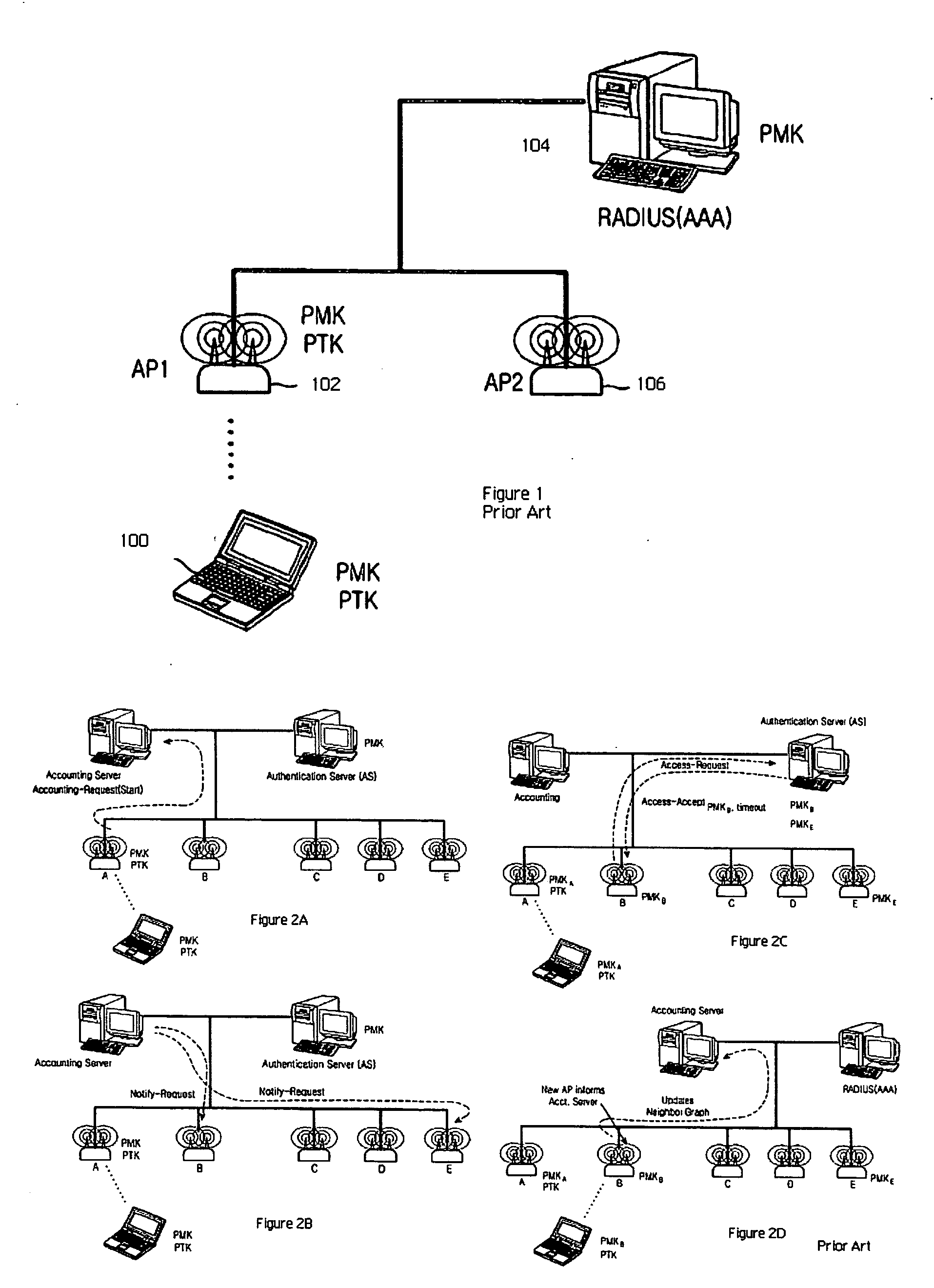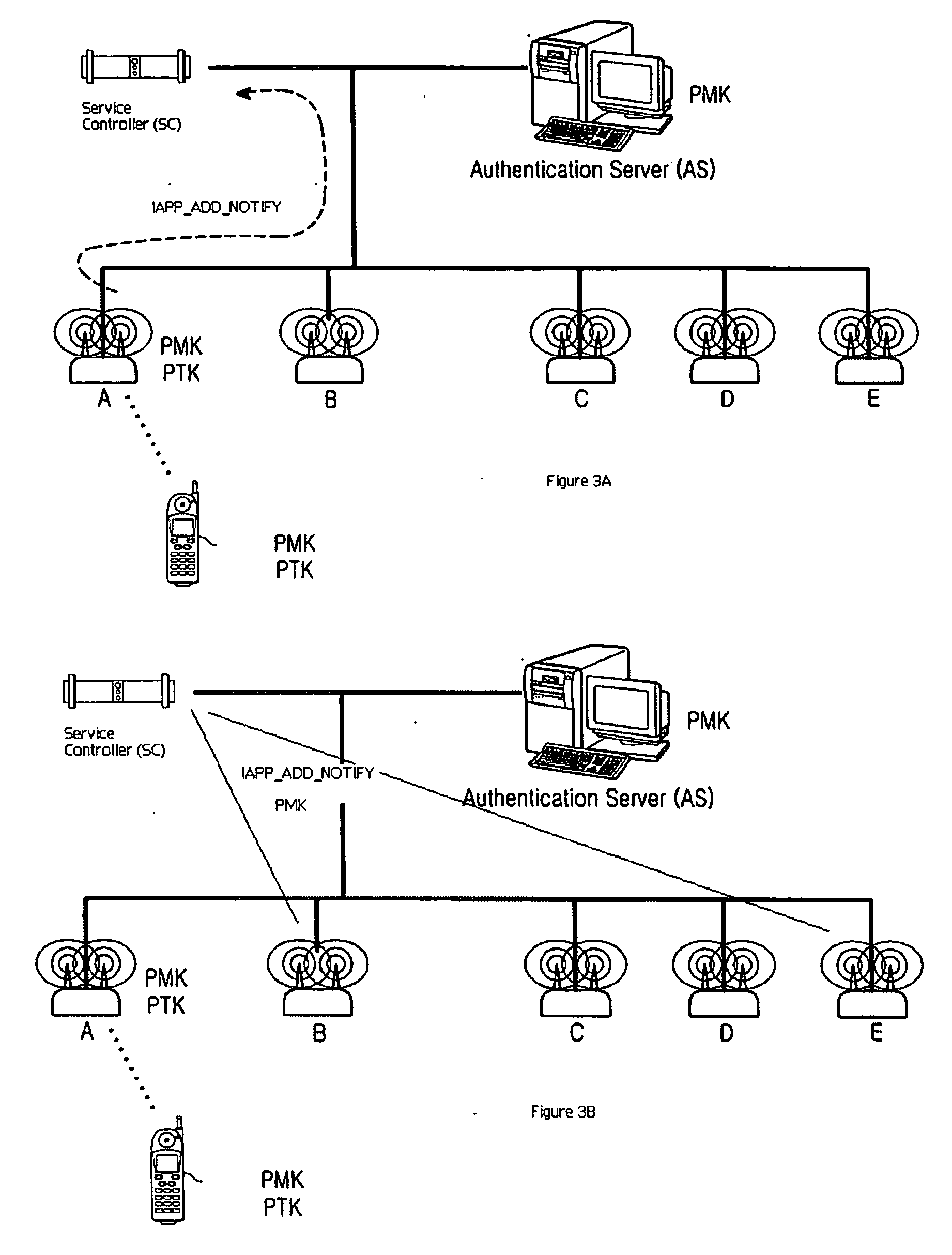Fast roaming in a wireless network using per-STA pairwise master keys shared across participating access points
- Summary
- Abstract
- Description
- Claims
- Application Information
AI Technical Summary
Benefits of technology
Problems solved by technology
Method used
Image
Examples
Embodiment Construction
[0016]FIGS. 3A, 3B and FIG. 3C illustrate a preferred embodiment of the inventive fast roaming technique. In this example, there are five (5) access points (AP A-E) merely to conform to the prior art example. The number of APs and their configuration of course will depend on the physical constraints of the facilities in which the infrastructure is implemented. The Wi-Fi infrastructure typically also comprises an AAA server (AS) that performs RADIUS-compliant AAA services. A service controller (SC), together with control routines incorporated in the various APs, facilitates the present invention. The service controller SC may be implemented in any convenient manner, such as a personal computer, a server, or similar machine. A representative service controller is a rack-mounted PC running a Linux 2.4 (or equivalent) operating system kernel on a Pentium (or equivalent) processor, and the device includes system memory and external storage for supporting software applications and associa...
PUM
 Login to View More
Login to View More Abstract
Description
Claims
Application Information
 Login to View More
Login to View More - R&D
- Intellectual Property
- Life Sciences
- Materials
- Tech Scout
- Unparalleled Data Quality
- Higher Quality Content
- 60% Fewer Hallucinations
Browse by: Latest US Patents, China's latest patents, Technical Efficacy Thesaurus, Application Domain, Technology Topic, Popular Technical Reports.
© 2025 PatSnap. All rights reserved.Legal|Privacy policy|Modern Slavery Act Transparency Statement|Sitemap|About US| Contact US: help@patsnap.com



